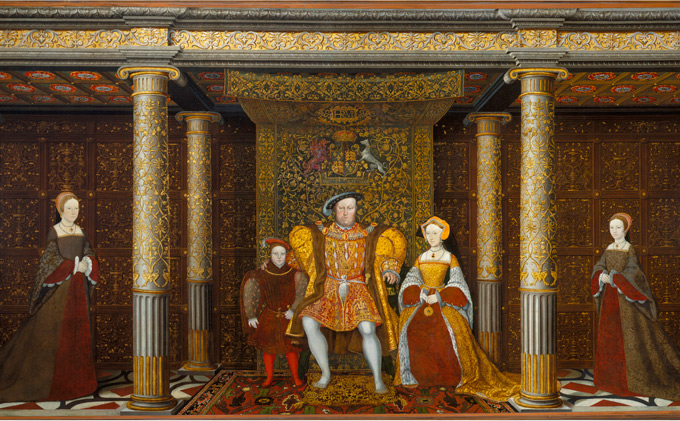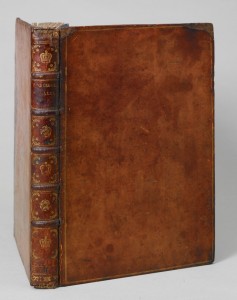We take a look at Henry VIII’s gardening manual, said to have inspired the Great Garden at Whitehall Palace that was destroyed by fire in 1698

The Royal Collection includes some of the earliest and rarest surviving records of gardens and plants, including the world’s first gardening manual, Ruralia Commoda. Written more than 700 years ago and acquired by King Henry VIII, the book features a section on how to create a royal garden, in addition to providing lots of general gardening advice.
A few of the bizarre horticultural tips included in the book are that cucumbers shake with fear at thunder; squash will bear fruit after nine days if planted in the ashes of human bone and watered with oil; and planting a radish, lettuce seed, nasturtium and colewort inside a ball of goat manure will result in tasty lettuces.

Vanessa Remington of Royal Collection Trust said, ‘Although it is impossible to know, it is tempting to think that Henry VIII may have sat in his library and looked through it for inspiration. What is important is that we can link the first painting of a real, recognisable, royal garden with the world’s first gardening manual.’
Written in Latin between 1304 and 1309 by Petrus de Crescentiis, a wealthy lawyer from Bologna in Italy, Ruralia Commoda was the only publication of its kind during Henry VIII’s reign. It entered the King’s library upon the death of its previous owner, Richard Rawson, the King’s chaplain and advisor on his divorce from Catherine of Aragon, in 1543.
It has also been speculated that the book may also have provided inspiration for Henry VIII’s lost garden at Whitehall Palace. In the mid-1540s Henry VIII created the Great Garden at Whitehall Palace, which was destroyed by fire in 1698. No trace of it remains, but it can be seen freshly planted in the background of the painting The Family of Henry VIII c.1545, making it the first real and identifiable garden in British art. The painting, which will be shown in the exhibition, is a powerful dynastic family portrait of Henry VIII, his wife Jane Seymour, their son Edward, and the two Princesses, Mary and Elizabeth, Henry’s daughters by Catherine of Aragon and Anne Boleyn.

According to the manual, the size of the garden and the perfection of the trees and plants within it were an expression of a king’s status, wealth and mastery over his environment. A royal garden should occupy a plot of 20 acres or more, and the planting of fragrant herbs was recommended because they ‘not only delight by their odor, but … refresh the sight.’ The gardener should ‘between these plants … form turf in the fashion of a seat, flowering and pleasant.’
As well as providing advice on creating ‘gardens for kings and other illustrious and wealthy lords’, Ruralia Commoda also revealed how to grow giant leeks, produce cherries without pits, grow different coloured figs on the same tree, preserve roses before they bloom, and transform basil into mint. Among the more unusual plants illustrated within the book is a mandrake – the root resembled a human figure, which was thought to scream when it was dug up, killing those nearby.
Download BRITAIN Magazine to your mobile today

 No mobile device? Purchase directly on Zinio for your desktop!
No mobile device? Purchase directly on Zinio for your desktop!






 © 2024
© 2024